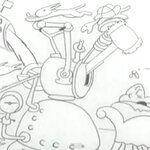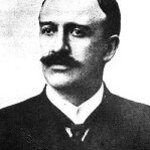Science History

Richard Holmes - Falling Upwards
Falling Upwards. What a wonderful title for a history of ballooning.
As someone with more than a slight interest in the history of science and technology*, I intend to buy a copy of this new book.
Falling Upwards is a wonderful history of the early years of ballooning, crammed with adventures and musings. Beginning in the 1780s with the generation that thought travel would be revolutionised by the balloon, it finishes at the end of the 19th century, when ballooning appealed only to those wanting something “refreshingly unreliable: a means to mysterious…

One Small Step - Two Small Strips ( Or Maybe Three )
The news that Neil Armstrong's EKG is up for auction has been reported across the world. Having more than a passing interest in how language is used, I was looking at the different ways that writers have dealt with this story when the article by PC mag caught my eye. The image they posted was not the same as the one from RR Auction.
Here is one of the images I used in my news blog, from RR Auction's web page.
Here is a screen grab of the PC Magazine news article.
I traced the PC Magazine version of Neil Armstrong's…

Two Armstrong EKG Readings - A Question Of Provenance
[edit]This article has been updated - please see:One Small Step - Two Small Strips ( Or Maybe Three )
I recently posted an article: Neil Armstrong's Heartbeat - EKG Up For Auction. Unsurprisingly many other news sources have featured the same story, after all, this is a unique item.
Or is it? Maybe it is merely almost but not quite unique.
You see, PC mag has published the same news, but with a different image.
The item being sold by RR Auction and the item depicted by PC mag each purports to be Neil Armstrong's EKG as he…

British Radar in WW2 - by Sir Robert Watson-Watt
I am pleased to be able to publish here in my blog a historical document of some importance: a short history of radar by Sir Robert Watson-Watt. The document - reproduced below these introductory comments - includes some information and images which have not, to the best of my knowledge, been published before on the internet. Of special interest to historians is thefirst photographic record of radiolocation of aircraft, made on the 24th of July, 1935. (A larger image is included within the article, below.) It is…

Neil Armstrong's Heartbeat - EKG Up For Auction[edit]This article has been updated - please see:One Small Step - Two Small Strips ( Or Maybe Three )
RR Auction of Amherst New Hampshire has announced a 2013 Space and Aviation Autograph and Artifact Auction. Items on sale will appeal to aviation and space buffs. RR Auction states that "Offerings include over 850 museum quality artifacts from the Golden Age of aviation and space flight".
I am currently writing a series of articles about the history of the development of the pacemaker, so quite naturally the item which interested me…

How To Build A Perpetual Magnet Woo Generator
"The general public sees perpetual motion inexactly. Probably they view each machine as a special case. The physicist or engineer, on the other hand, is very precise and classifies perpetual motion machines according to which law of thermodynamics they violate."
Kevin T. Kilty
Riff-Raff = Woo
"A good working definition of scientific riff-raff [is] any subject on which one is liable to receive a letter on the following lines: How can you be so blind as not to see this great truth. There is a conspiracy of…

Army physician William Beaumont was stationed at Fort Mackinac on Mackinac Island in Michigan in the early 1820s, when it existed to protect the interests of the American Fur Company. The fort became the refuge for a wounded 19-year-old French-Canadian fur trader named Alexis St. Martin when a shotgun went off by accident in the American Fur Company store and duck shot tore into his abdomen at close range June 6th, 1822.
That accident is key to much of our early knowledge about the workings of the digestive system, say speakers at the Experimental Biology 2013 meeting.
St. Martin's…

Using chromosomal data drawn from genetic databases, a group of researchers were able to identify the surname of one in every eight people from a sample of 911 American men. Sometimes other private information could be determined, including their geographic locations or the identities of their relatives.
DNA sequencing has obviously led to enormous advancements but any great new technology brings policy and implementation concerns. So extensive networked databases can give researchers valuable knowledge about causative and preventative factors for disease, and identify new targets for…

Can anyone ever truly take credit for a discovery? Every researcher stands 'on the shoulders of giants', as Sir Isaac Newton said. Scientists talk to each other and argue and hone their thoughts based on the criticisms and reactions they get. No one lives in a bubble and great things happen when a lot of smart people know each other and debate as often as possible.
But when the debates are well-known, it's difficult to assign credit and far too easy to take it away. In modern times, tearing down statues of giants and standing on the rubble happens more often than standing on their shoulders…

A greeting card appropriate to Silchester, about 1500 years ago.
The English is from a little bit later, more likely King Alfred’s time. However, for the Britons still living there, although surrounded by Saxons, I have to use Modern Welsh, since only a few Ogham inscriptions from that time survive.